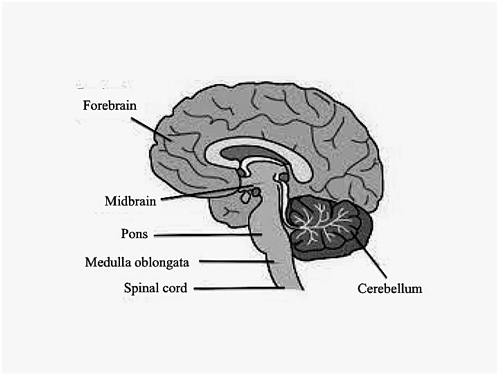Part of the hindbrain positioned directly above the spinal cord and anterior to the cerebellum, it is connected to the midbrain by the pons (see figure below). Also known the spinal bulb, it forms the lowest portion of the brain stem, being pyramidal in shape and measuring about 3 cm in length, some 2 cm in width at widest part, and about 1.25 cm in thickness. As with the cerebellum and cerebral cortex, it consists of both myelinated (white matter) and unmyelinated (gray matter) fibers. However, in the medulla oblongata, the white matter is on the outside (open or superior part corresponding with the fourth ventricle) and the gray matter on the inside (closed or inferior part containing the central canal). This part of the brain stem is responsible for a complex set of integrative functions. It has a number of functional centers that regulate the autonomic nervous system, heart rate, respiration, and digestion. In these respects, it is perhaps the most important structure with regard to life-sustaining function in the central nervous system. Other functions include the control and coordination of movement, and regulation of the sleep-wake cycle. Moreover, the last seven cranial nerves emerge from the medulla oblongata. Lesions to the its middle portion can result in paralysis of the opposite side of the body, partial paralysis of the tongue, and the loss of tactile sensations and sense of position. In contrast, damage to the lateral medulla oblongata may give rise to a loss of pain, the gag reflex, and movement coordination more generally, as well as decreased sensitivity to temperature changes, difficulty in swallowing, vertigo, and vomiting.
